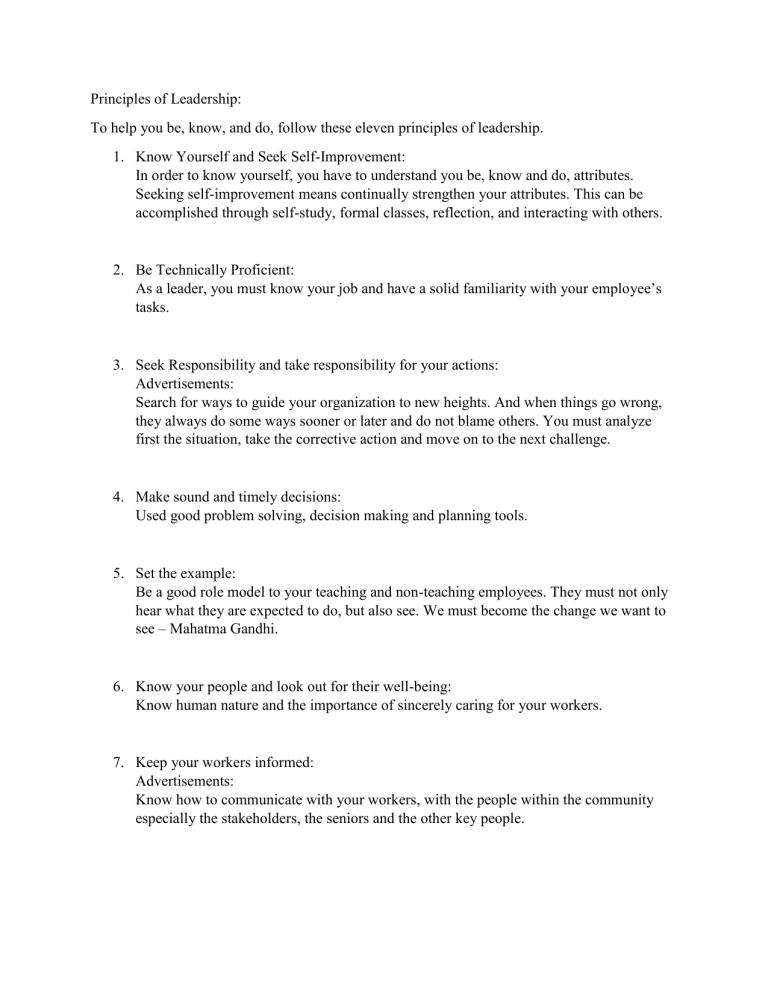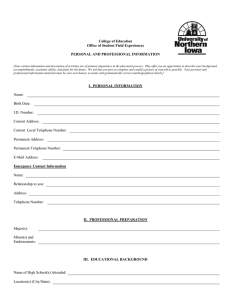
Principles of Leadership: To help you be, know, and do, follow these eleven principles of leadership. 1. Know Yourself and Seek Self-Improvement: In order to know yourself, you have to understand you be, know and do, attributes. Seeking self-improvement means continually strengthen your attributes. This can be accomplished through self-study, formal classes, reflection, and interacting with others. 2. Be Technically Proficient: As a leader, you must know your job and have a solid familiarity with your employee’s tasks. 3. Seek Responsibility and take responsibility for your actions: Advertisements: Search for ways to guide your organization to new heights. And when things go wrong, they always do some ways sooner or later and do not blame others. You must analyze first the situation, take the corrective action and move on to the next challenge. 4. Make sound and timely decisions: Used good problem solving, decision making and planning tools. 5. Set the example: Be a good role model to your teaching and non-teaching employees. They must not only hear what they are expected to do, but also see. We must become the change we want to see – Mahatma Gandhi. 6. Know your people and look out for their well-being: Know human nature and the importance of sincerely caring for your workers. 7. Keep your workers informed: Advertisements: Know how to communicate with your workers, with the people within the community especially the stakeholders, the seniors and the other key people. 8. Develop a sense of responsibility in your workers: Help to develop good character traits that will help them to carry out their professional responsibility. 9. Ensure that tasks are understood, supervised, and accomplished: Make sure that there is an intact communication between the teaching and non-teaching personnel, because communication is one of the most important key to make things possible. 10. Train as a team: Although many so-called leaders call their organization, department, section, etc. a team; they are not really teams… they are just a group of people doing their jobs. 11. Use the full capabilities of your organization: by developing a team spirit, you will be able to employ your organization, department, section, etc. to its fullest capabilities.




